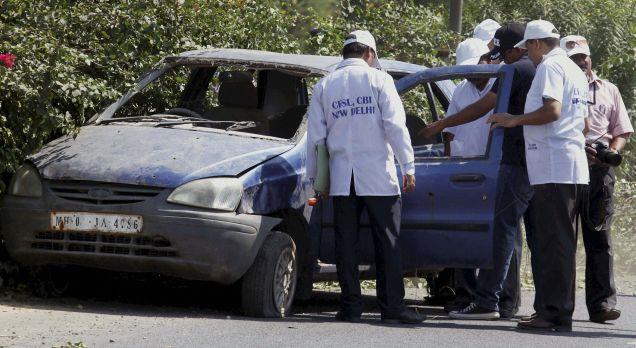 New Delhi, August 18; NIA is averse to sharing the confessional statement of 26/11 terror accused David Headley with CBI for its probe into the Ishrat Jahan encounter case, citing a confidentiality pact between India and the United States.
New Delhi, August 18; NIA is averse to sharing the confessional statement of 26/11 terror accused David Headley with CBI for its probe into the Ishrat Jahan encounter case, citing a confidentiality pact between India and the United States.
The Home Ministry is caught in a catch-22 situation over providing the statement of Headley to CBI owing to the undertaking given to the Federal Bureau of Investigation that the same would not be shared with any other probe agency other than the National Investigation Agency (NIA).
CBI had written to NIA seeking sharing of the statement to check the veracity of the reports claiming that 2004 Gujarat encounter victim Ishrat had links with Pakistan-based terror outfit Lashkar-e-Taiba.
NIA has informed the Home Ministry about the demand of CBI and conveyed that it cannot share Headley’s statement with CBI as FBI had agreed and arranged the meeting with Headley in 2010 under the Mutual Legal Assistance Treaty with a condition that NIA will not share his statement with anyone.
NIA has made it clear that it could share the information provided the government gave a go-ahead for it, official sources said.
According to the sources, sharing of Headley’s statement would amount to flouting the commitment given to the US authorities and this step is fraught with a danger as America may not cooperate with India in future.
NIA has cited the confidentiality clause with the US government in the Headley case, according to which evidence collected in the 26/11 probe cannot be used in any other case.
Faced with the situation, the Home Ministry has decided to seek the opinion of the Law Ministry before taking any final decision as CBI has been pressing for handing over Headley’s confessional statement to ascertain facts whether Ishrat, who was killed in an alleged fake encounter in Gujarat nine years ago, had links with LeT.
CBI is probing the encounter case and there have been demands from various quarters, including Congress leader Digvijay Singh, to clarify whether she had any links with LeT.
CBI is also probing the role of former Intelligence Bureau officer Rajinder Kumar and three others in the Ishrat case.
Headley, who had recced the 26/11 targets in Mumbai and currently in the custody of the US authorities, was questioned by NIA in 2010 as part of its investigation in the Mumbai terror attack case.
Reports have suggested that NIA investigators initially said that Headley had disclosed that LeT commander Zaki-ur-Rahman Lakhvi had told him (Headley) in 2005 of a terror operation that had failed in India as Ishrat and those assigned for it with her had died.
This information was reportedly contained in the 100 – page interrogation report, prepared by NIA after questioning of Headley over for seven days in the US, which was given to IB. The document was also said to have been made available to some mediapersons.
But later, the two paragraphs that reportedly referred to Ishrat were missing from the NIA report.
NIA sources have been maintaining that Headley’s comments are not legally admissible in any case other than 26/11 and his account is based on second hand information so it should be treated as ‘hearsay’
19-year-old Ishrat, from Mumbra in Thane district adjoining Mumbai, Javed Shaikh alias Pranesh Pillai, Amjadali Akbarali Rana and Zeeshan Johar were killed in the alleged fake encounter with the Gujarat police on the outskirts of Ahmedabad on June 15, 2004.
